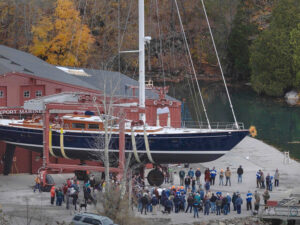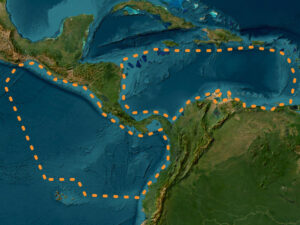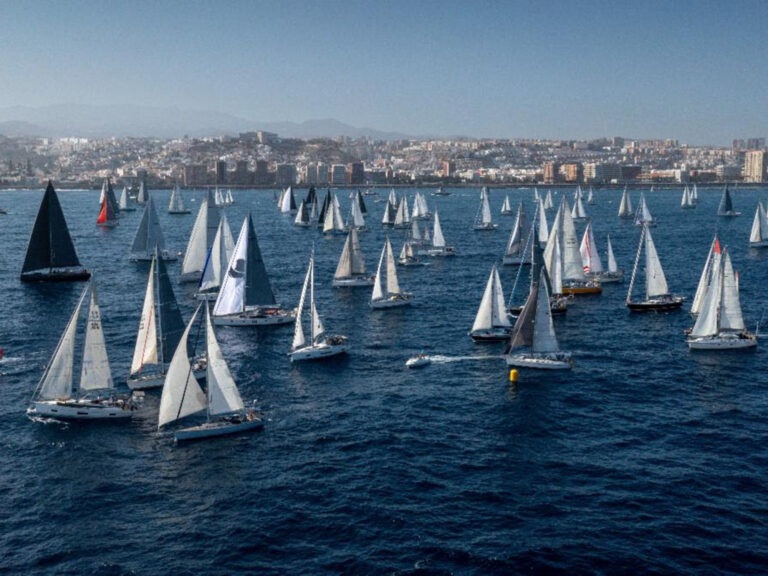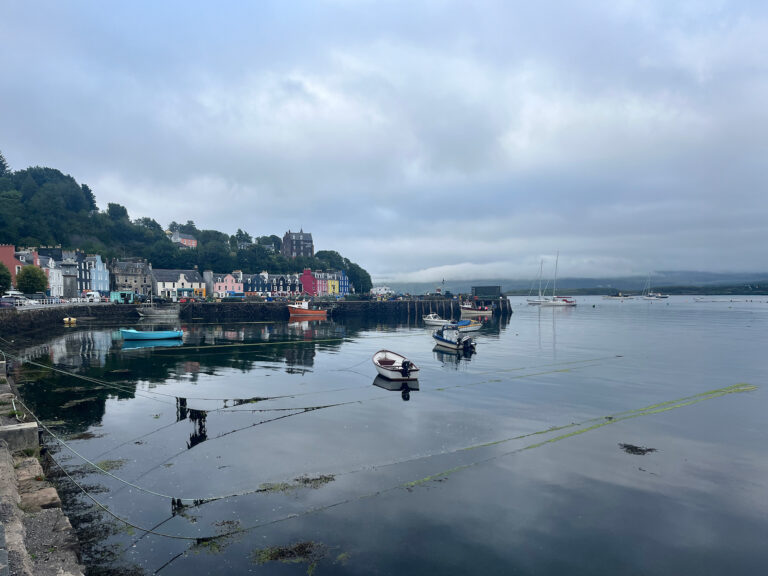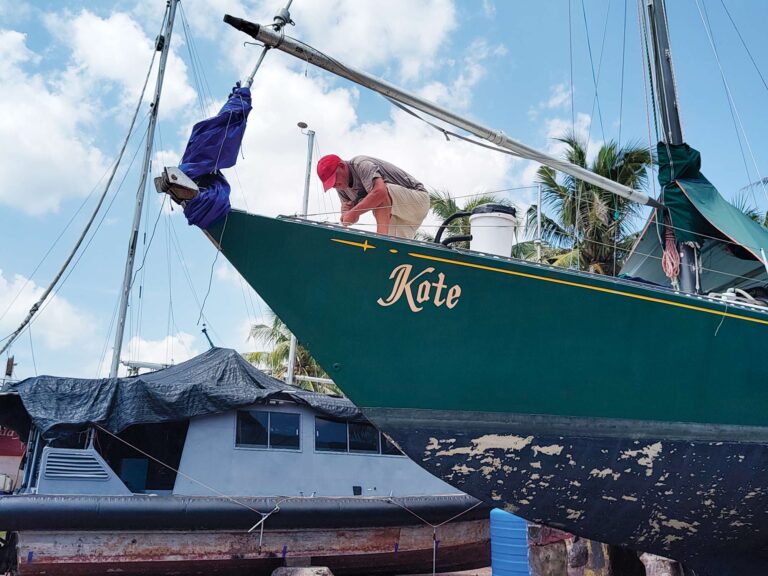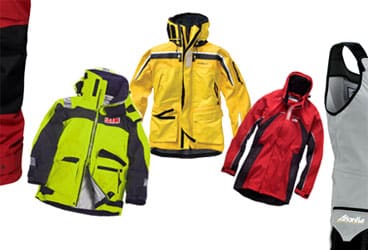
Foul Weather Gear Review
The latest trend in foul-weather gear is straightforward: Sailors want the best that technology can offer in jackets and pants, which means lighter fabrics that are more breathable and guaranteed waterproof.
What’s not so straightforward is deciphering the array of products, the brand-specific terminology, and the engineering and marketing logic behind it all.
Still, whether you’re a die-hard advocate of watertight P.V.C. or the ultimate in breathability, knowing what’s innovative and most appropriate for the way you sail is invaluable.
“People will go into a West Marine store and ask ‘What’s the best you’ve got?’” says Chuck Hawley, the company’s vice president of product information. “People have to be realistic about what they’re doing. If they’re not crossing oceans, there’s no reason for them to have ocean gear. They may imagine circumnavigating, but barely a third of them do. They buy the gear and think it’s overly restrictive, when they’ve just bought the wrong level of gear. The point is, you can overbuy foul-weather gear and sometimes it’s overkill for normal conditions.”
Making the rounds at boat shows, visiting with retailers, and interviewing manufacturers helped me understand important basics like application, material, and fit. These are the useful details you’ll need as you peruse catalogs, head to stores, and stroll through the boat shows on your search for your kit.
How Gear Works
Jerry Richards, national sales manager for Gill North America, elaborated on the main role of good foul-weather gear at the U.S. Sailboat Show in Annapolis, Maryland, last fall.
“The jacket isn’t designed to keep you warm. It’s designed to keep you dry,” he told me when I caught up with him at the Gill booth. “Staying warm is a byproduct. Ask yourself this question: Do you sail at night? The body struggles at 2 a.m. Remember, it’s the base layer and the fleece midlayer that will keep you warm, not the jacket.”
Essentially, once you determine an application—how you’ll use the gear—you’re ready to move on to matters like fit and durability and ultimately, warmth and comfort. When making choices, you’ll probably want garments that leave enough room for a base layer and a midlayer (see “Tips on Fit and Care” on page 84) while allowing you to move in typical on-deck positions such as grinding winches and handling sails.
“Sailing is an active sport,” said Jeff Earl, northeast business development manager for Henri Lloyd North America, in a phone interview. “You want a good range of motion.”
As well, technological advances have made it possible for manufacturers to create jackets and bibs from materials that move moisture away from the body. If fabric is breathable, you might wonder how it can be waterproof, too.
For a simple version of the answer, I consulted retailer Martha Parker, a lifelong racer and offshore sailor. “This is how foul-weather gear breathes,” she explained during an on-site visit to Team One Newport, which sells lines of yachting apparel, uniforms, and gear from its Rhode Island retail operation as well as through its website.
“Imagine a chain-link fence,” she said. “That’s the outer layer. Body moisture moving away from you and out that fence is like ping pong balls. Rain and waves are the basketballs. All they can do is bounce off the fence. They don’t get through.”
Once you understand the concept behind the newer fabrics, the next step is to decide what you want to buy based on the way the fabrics are constructed for a set of jacket and pants. Each manufacturer employs some level of proprietary construction process and material, in offerings ranging from basic to premium gear. It’s good to browse them all and spend some time learning about the differences. Basically, “fabrics can have two to three layers,” said Filippo Bovio, the U.S. distributor for SLAM. “The outer shell is typically made of nylon. And some of the newer materials can stretch, allowing a more snug and more comfortable fit.” (See “Choice of Fabrics”, right). Women sailors, take note: Nearly all the makers carry female sizes and take female form and contours into account in design.
“In our women’s lines, you’ll find the arm lengths a touch shorter, and the hips a touch wider, more flared,” noted Henri Lloyd’s Earl. And drop seats make it possible for women to keep jackets on while visiting the head.
Time to Go Shopping
Parker, who sells most of the brands listed in this roundup as well as others, including gear from outdoor outfitter Patagonia, sums up the dilemma facing today’s sailors on the hunt for the right gear.
“Fabrics have come a long way,” she said. “Everyone has expanded their lines and it gets confusing. A lot of it crosses over to fashion. Twenty-five years ago, you’d never wear your foul-weather gear to go out to dinner. Now, it’s so good, people wear it all the time.”
Cost is important to consider, yet all makers emphasize that the reliability, durability, and comfort that comes with premium gear make it worth the price.
“In the world of technical apparel,” said Bill Lynn, chief marketing officer for Atlantis Weather Gear, “you get what you pay for. Cost is certainly a factor, but more expensive pieces will typically deliver better performance, better construction, and better durability.”
The ability to withstand the test of time and use is critical, according to Brandon Flack of Musto. “Boat shows are a unique opportunity to educate people,” he said. “I tell them all the time, ‘Try all the gear from all the lines. If you buy something right, you’ll be living in it for a while.’”
Durability, alongside fit, is what Flack believes sailors should seek. “Sailing is such a wet environment,” he said in a phone interview. “You don’t generally have the option to disappear halfway through the delivery. This is where you are and you can’t check out and into the lodge. It’s not an option.”
Parker agreed that when it comes to the final choice on gear, personal preferences about fit can’t be overlooked and that’s why “it’s important to try it on.”
“We prefer to offer a generous cut on all our foul-weather gear,” noted Bovio of SLAM gear.
Don’t ignore the details, added Lynn. “Fabric is key to achieving the right level of performance, but it’s only half the equation,” he said. “Each piece also needs to have the right zippers, snaps, cord locks on drawstrings, fleece around the inside of the collar, cuffs, cuff closures, pockets, pit vents, etc., and each of these needs to have been tested in the heat of battle.”
Whatever level of sailing you do, there’s yet another reason to invest in the right gear, according to Gill’s Jerry Richards and other makers. Sailing is a sport and a lifestyle, and gear is supposed to enhance these experiences.
“It can really make a difference, and make sailing more enjoyable for everybody by making it more comfortable and enjoyable in the foulest conditions,” Richards said. “You can be so much more adventurous. It can be life changing.”
Elaine Lembo, Cruising World_’s deputy editor, also writes about chartering._



